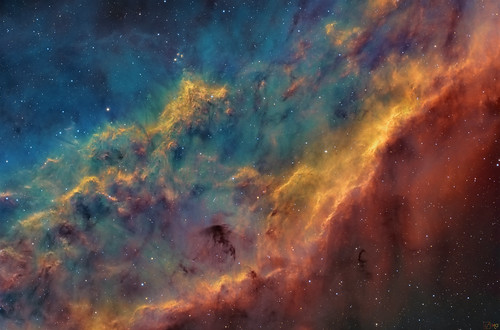
The Glowing Hand of God (CG-4) by William Ostling, on Flickr
Full write-up here: https://theastroenthusiast.com/cg4/
This is yet another telescope live image. The H-Alpha data really made this image come to life – it was actually a bit disappointing seeing how little dim dust the RGB image contained when comparing to other images. Regardless, seeing the depths of the hydrogen gas was really stunning. I’ve also been working on a new processing technique where I separate broadband and narrowband gas, which allows to to better control both levels. I think it works quite well!
Can a gas cloud eat a galaxy? It’s not even close. The “claw” of this odd looking “creature” in the featured photo is a gas cloud known as a cometary globule. This globule, however, has ruptured. Cometary globules are typically characterized by dusty heads and elongated tails. These features cause cometary globules to have visual similarities to comets, but in reality they are very much different. Globules are frequently the birthplaces of stars, and many show very young stars in their heads. The reason for the rupture in the head of this object is not yet known. The galaxy to the left of the globule is huge, very far in the distance, and only placed near CG4 by chance superposition.
Website: https://theastroenthusiast.com/
Instagram: https://www.instagram.com/the_astronomy_enthusiast/















